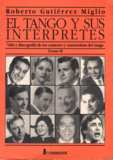


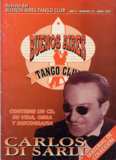
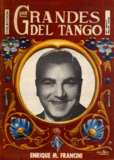
TANGO: Discographical Bits & Pieces
Some questions about tango recordings or editions seem to be ever recurring. I have created this page to give these little pieces of information, each very limited in scope on their own, a home. Still on the thin side now, but I guess it will grow with time.
Johan
| "If it is written it must be true"
(24-05-2014) You may consider - rightfully - that it is not that important who really recorded "Chafalonia" in 1923. Nevertheless, if you are the kind of person ready to bet your head (or worse: swear on the soul of your little children) once you have read something somewhere: read on... According to the discography of Osvaldo Fresedo by Nicolas Lefcovich, "Chafalonia" was recorded by the Fresedo orchestra and issued together with "La Llorona" by the Orquesta Típica Pereyra. But if we consult the Encyclopedic Discography of Victor Recordings (EDVR, excellent initiative from the University of California, Santa Barbara) we find that for record nr. 77293 both Chafalonia and La Llorona were recorded by the Eduardo Pereyra orchestra.
Fotos of record labels (that can be found on eBay) seem to indicate that Lefcovich is right. Nevertheless, I don't think that EDVR made an error, it looks like they faithfully represent the data that can be found on Victor internal documents (catalogs, so called blue history cards and others). Already in 1924, when the record was announced in Caras y Caretas (n° 1337, May 1924), the same data appear: both sides recorded by the Pereyra orchestra. So, who is right ? Hard to tell (at least I can't): the style of the Chafalonia recording seems acceptable as a Fresedo in those years. On the other hand, from the few Pereyra recordings that are available to me (most are lost ?) I can not conclude that the style of the 2 orchestras is so strikingly different that you can discern them with 100% certainty by simply listening (again: at least I can't). But the conclusion is inevitable: even the recording company's own data (on blue cards or on record labels) are not always as accurate and consistent as we expect them.     |
Errare humanum est... (and when drastic, you will make us smile)
(04-04-2013)
Two Roberto Firpo recordings, the tangos "Nunca te olvidaré, madre" and "Viejo Disco", edited as if they were recorded by Francisco Canaro... The record number 8793 leaves little doubt about the error (at that time Canaro records had numbers in the 4000-range) - and they were correctly advertized by Disco Nacional in Caras y Caretas (n°1567, Oct. 1928). |
|
"Intimas"
and the Francisco Lomuto discography
(19-12-2010)
|
Coca-Tango or Tango-Cola ? : La
Orquesta Típica Coca-Cola
(27-12-2006)
|
Ricardo
Tanturi / Enrique Campos - or not ? - The Magenta Label
(13-09-2006) 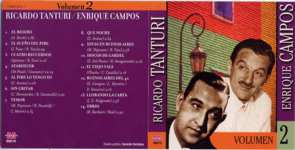 The Magenta label has edited two CDs entitled "Ricardo Tanturi / Enique Campos" (Vol.1 & 2). However, this title is more than misleading. The combination of Ricardo Tanturi and Enrique Campos will certainly sound appealing to those who like "Epoca de Oro" music (Tanturi and Campos recorded together between 1943 and 1946 - Campos replaced Alberto Castillo who had left Tanturi to pursue a soloist carreer). Alas: not a single of the 28 tracks (14 on each CD) is performed by Campos and Tanturi together. Most of them (24, neatly divided into 12 on each CD) are recordings of Enrique Campos with accompaniment of Miguel Nijensohn y su Cuarteto A Puro Tango (°), recordings made in 1969 for that same Magenta label. To each CD two late Tanturi recordings were added (to justify the title on the cover ?) , very different in style when compared to the Campos recordings. On Vol.1: - Trasnochando (track 1) - Un Amor (track 7) On Vol.2: - El Resero (track 1) - Qué Noche (track 7) According to the Ricardo Tanturi discography, all 4 titles were recorded in 1966 for the "HyR" label. Strangely enough, according to the discography, 2 of these recordings feature vocalists (Trasnochando, with Jorge Falcón and Un Amor, with Blanca Bassi - and the existence of these recordings is confirmed) but on this Magenta edition (the Vol.1) they appear as instrumentals (with an arrangement which is identical to the editions with Falcón and Bassi). Although it is difficult to find more information on the HyR (or H&R) label, the link with Magenta (as a subsidiary or because Magenta obtained the rights) seems to be established: recordings made by Mercedes Simone for this HyR label (with Emilio Brameri) were also reedited by Magenta. In the sixties, separate recording of instrumental and vocal parts was already common. Could it be that Magenta included only the instrumental part on their CD in order not to compromize the Tanturi/Campos ilusion they created on their cover ? The Magenta label seems to hold a
trademark
on this kind of misleading announcements. (°) There seems to be some
uncertainty
about the correct spelling of the name of this pianist, even within the
same source |
Anibal
Troilo and "La Bordona" (09-07-2006)
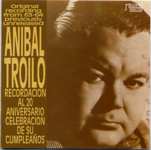 Most discographies (if not all) will mention 3 recordings by Anibal Troilo of "La Bordona" (composed by Emilio Balcarce). - 1956, for the Odeon label
And yet many people believe that
there
exists a fourth recording from 1952 (the T.K. years). This non-Troilo version made it on to CDs like "Sus Mejores Momentos" (Orfeon-Mexico) and "Orquestas Con Historias" (Diapason).... also as performed by Troilo. Effectively, the introduction of this recording has a certain twist (not bad at all) which, after knowing the facts, could be considered as "not very Troilo" but here we enter the dangerous area of the subjectivity and reliability of style definition. Surprise: a 4th recording does
exist, but
it is not the chimerical 1952-T.K. In fact it is not a studio recording
but seems to be recorded during a radio performance, possibly in 1964.
The recording is in mono and the arrangment is the one from the 1963
studio
recordings (violins accompanying the piano intro, still absent in the
1962
version). All about Troilo : Anibal
Pichuco Troilo (multilingual site: English - Español -
Japanese) |
Tita
Merello and "La Cumparsita" (09-07-2006)
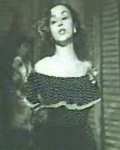
Some people have been desperately seeking the recording of "La Cumparsita" by Tita Merello, without succes. It seems to be mentioned in some unofficial discographies that are circulating in spreadsheet format among collectionists. In these discographies the following 4 hard-to-get recordings are always found (all with accompaniment by the Carlos Figari orchestra): - La Cumparsita-1969 Apart from El Choclo, which was recorded in 1954 with Francisco Canaro, none of the other titles can be found interpreted by Tita Merello. But taken together they form the
musical
background of "Apologia del tango" (a poem by Enrique Pedro Maroni : Tango
que me hiciste mal y que sin embargo quiero... and which is often
recited
on various musical backgrounds). Therefore I strongly believe that these recordings do not exist independently but are the creation of an over zealous compiler who added lines for each of the musical parts in "Apologia del tango". Liliana's page (can I say
fan-site ? ;-)))
) : Tita Merello
(Español ) |
|
|
|
|
|